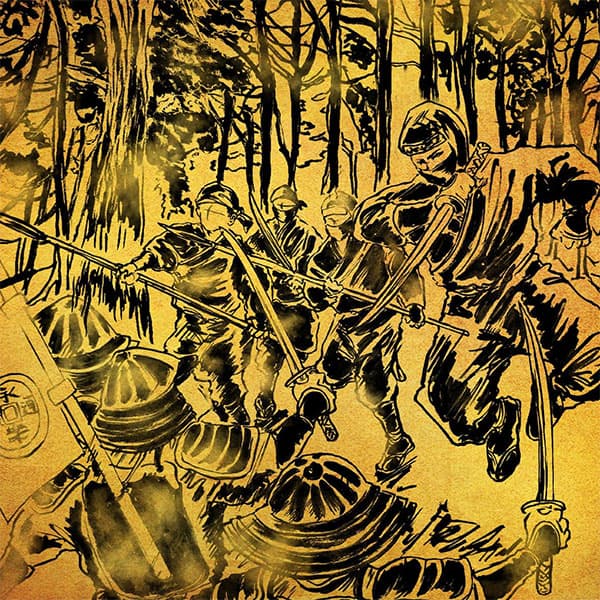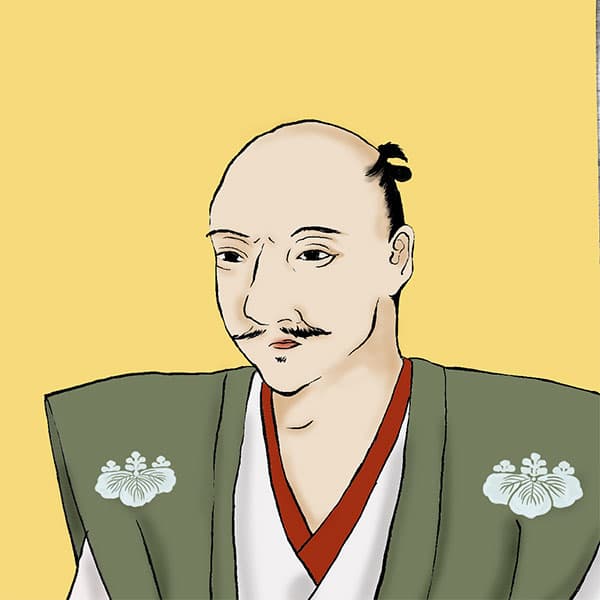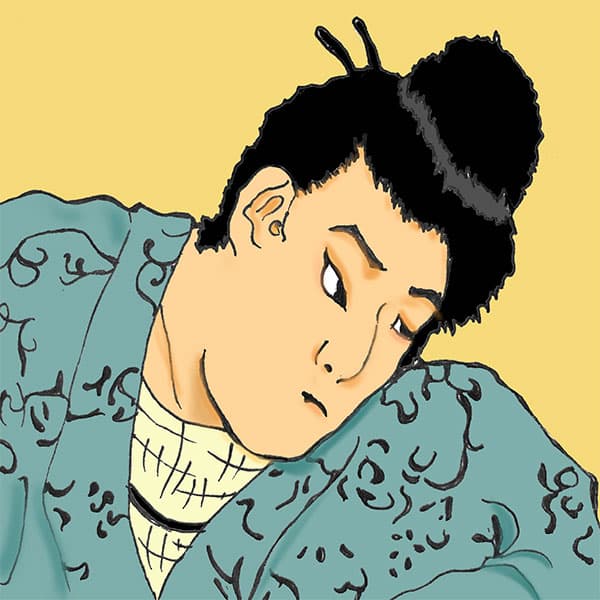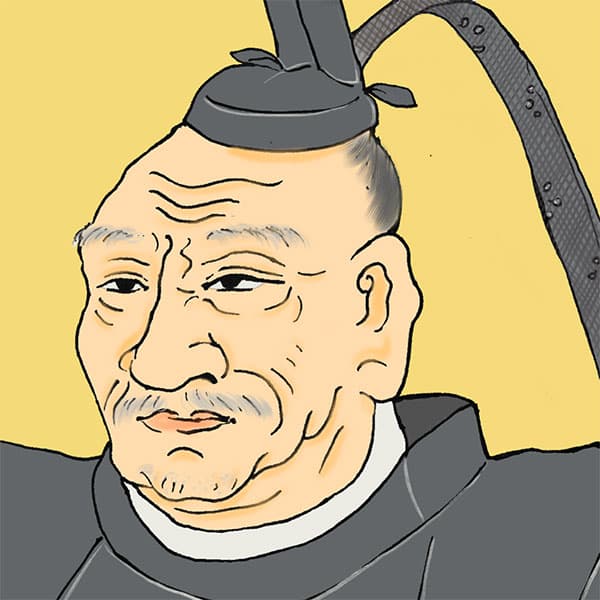Tensho Iga Rebellion (2/2)What is the outcome of the fierce battle between the Oda army and the Iga ninja?

Tensho Iga Rebellion
- Article category
- case file
- Incident name
- Tensho Iga Rebellion (1578-1581)
- place
- Nagata, Iga, Mie Prefecture
- Related castles

Iga Ueno Castle
- people involved
In September of the same year, the Oda army sent approximately 44,000 soldiers to Iga, as if to avenge their revenge. They will attack Iga from six directions. Nobuo remained the supreme commander, but many of the main military commanders of the Oda family, including Nagahide Niwa and Ujisato Gamo, also participated. The Iga sect, on the other hand, was approximately 10,000 strong, consisting mainly of the 12 members of the Iga Sokoku uprising, including Mitsuji Ueda, Tanba Momochi, Seibei Machii, Joun Morita, and Fujibei Momota. You can gauge Nobunaga's seriousness because there is a huge difference in military strength.
Looking at the attack method, the main force, Nobuo, and others invaded Iga from the Iseji exit that followed Ise. Nagahide Niwa and Kazumasu Takigawa from Koka attacked from Tsugeguchi in northern Iga, and Ujisato Gamo, Yasuharu Wakisaka, and Hidemasa Taraoguchi Hori from Tamatakiguchi. In the southwestern part of Iga, Junkei Tsutsui and Sadatsugu are attacking from the Kasama exit, and Nagamasa Asano is attacking from the Hatsuse exit. It's an attack style that makes you feel as if you're going to miss just one mouse. By the way, along with Kazumasu Takigawa, Koga ninja who moved to the Oda side after the fall of the Rokkaku clan also joined the attack on Iga.
After learning of the Oda army's movements, the Iga clan held an evaluation at Heirakuji Temple and decided to fight a full-scale resistance. They fortified themselves in strongholds such as Heirakuji Temple and Hijiyama Castle, and fought against them in guerrilla warfare such as night attacks. However, they could not match the numbers of the Oda army, and due to the Oda army's tactics, they were unable to keep pace. Approximately 1,500 Iga people were holed up in Heirakuji Temple, but it fell to Kazumasu Takigawa and others. Approximately 700 monks were beheaded at this time.
According to documents from the time, the Second Tensho Iga Rebellion seems to have been a fairly one-sided massacre by the Oda army. The Oda army burned down bases one after another, along with shrines, temples, and forts across Iga. It is said that the entire Iga area was burnt down in about two weeks, and in the end more than 30,000 people on the Iga side lost their lives, one-third of the total population, including non-combatants. that's right.
The fierce battle of Hijiyama Castle
One of the fiercest battles during the Second Tensho Iga Rebellion was the battle at Hijiyama Castle. There were 3,500 Igashu, or about 10,000 people including non-combatants, holed up in the castle. The Oda side, including Ujisato Gamo, Kazumasu Takigawa, and Hide Tanba, attacked the castle many times, but were unable to capture it. Junkei Tsutsui and Sadatsugu were attacked at night by the Iga clan and suffered a major blow. By the way, the Iga-shu who were active at this time are said to be the ``Seven Spears of Mt. Hiji.''
However, the Igashu gradually began to suffer from food shortages and decided to join up with another force at Kashiwara Castle. The day before the Oda army's all-out attack, he escaped from Hijiyama Castle and headed for Kashiwara Castle. It is said that when the Oda army came for an all-out attack, the inside of the castle was an empty shell. The Oda army must have been very angry.
The final siege battle at Kashiwara Castle
Kashiwara Castle is a mountain castle that was the last stronghold of the Iga clan. Approximately 16,000 Iga soldiers, led by the commander-in-chief Yoshimasa Takino, and their wives and children were holed up. The Oda army attacked to some extent, but due to the desperate resistance of the Iga clan, their own army suffered losses, so they changed their strategy to a food attack. As the situation reached a stalemate, Goroji Okura, a monkey scientist from Nara, intervened and suggested that the Iga clan surrender. The Igashu agreed to protect the lives of their soldiers, and when the Oda army accepted, they opened the castle, and the war ended. After that, Nobunaga gave Iga to Nobuo.
The following year, in 1582, Nobunaga was defeated by Akechi Mitsuhide during the Honnoji Incident, and the Iga clan rose again and fought small battles in various places. Kashiwara Castle was taken from the Oda army in a night attack, but in the end the Oda army took it back. This battle is sometimes called the ``Third Tensho Iga Rebellion''.
By the way, in Nabari City, there is a custom of lighting lanterns in front of the eaves during Obon, saying, ``Let's give lanterns to Akechi-san.'' This is an episode that shows how hostile the people of Iga were to Nobunaga.
Tokugawa Ieyasu who accepted the Iga ninja and the “Kami-kun Iga Crossing”
After the Tensho Iga Rebellion, the surviving ninjas were scattered and served military commanders in various places. One of the military commanders who picked up these Iga ninjas was Tokugawa Ieyasu. Since Hattori Hanzo had originally served him, it may have been easier for him to accept him.
Iga ninjas are once again attracting attention due to Ieyasu's ``Kami-kun Iga Crossing'' right after the Honno-ji Incident. Several days before the Honnoji Incident, Ieyasu had been visiting Sakai (Osaka Prefecture) at Nobunaga's invitation. When Ieyasu received the news of the incident at Honnoji Temple, he sent over 30 of his vassals, including Tadatsugu Sakai, Yasumasa Sakakibara, Tadakatsu Honda, and Naomasa Ii. At one point, Ieyasu was in despair and tried to commit suicide, but his vassals admonished him and he decided to return to Mikawa, despite the possibility that he would be targeted by Mitsuhide. He passed through Iga and took a boat from Ise to Mikawa, his home country, using the ``Iga crossing,'' but the Iga people helped him do so.
Hattori Hanzo's connections may have played a role, but it may also be that he cooperated with Ieyasu because he felt indebted to Ieyasu for accepting the Iga clan after the Tensho Iga Rebellion. It's interesting to see these connections in history.
The Koka ninja also saved Ieyasu at this time, and later served Tokugawa Ieyasu along with the Iga shu. During the Edo period, when the war had calmed down, the Igashu were employed by the shogunate as the Iga-gumi Doshin under Masashige Hattori, and were assigned to guard Edo Castle.
On the other hand, Iga Province was ruled by Sadatsugu Tsutsui as the lord in the early Edo period, but due to the outbreak of family unrest, it was annexed and Takatora Todo became the lord. Under Takatora, the Igashu became a samurai class and played an active role as samurai.
Touring the ruins of the Tensho Iga Rebellion
During the Second Tensho Iga Rebellion, the base of the Igashu was burnt down by the Oda army, so most of the remains such as stone monuments and castle ruins remain as reminders of that time. The fact that there is almost nothing left in existence shows just how powerful the Oda army was.
However, sites related to the rebellion are introduced, mainly on the websites of local tourism associations. For example, Iga Ueno Castle now stands on the site of Heirakuji Temple, and the surrounding area is now a park, and within the park are relics such as the Olympic pagoda and stone Buddha from when it was a temple. At the Kashiwara Castle ruins, you can see the remains of the earthworks and dry moat. If you are interested, why not visit it?
Reread the article on the Tensho Iga Rebellion
- people involved

- WriterNaoko Kurimoto(Writer)I am a former travel industry magazine reporter. I have loved history, both Japanese and world history, since I was a child. I usually enjoy visiting temples and shrines, especially shrines, and often do ``pilgrimages to sacred places'' themed around historical figures. My favorite military commander is Ishida Mitsunari, my favorite castle is Kumamoto Castle, and my favorite castle ruins is Hagi Castle. My heart flutters when I see the ruins of battle castles and the stone walls of castle ruins.







